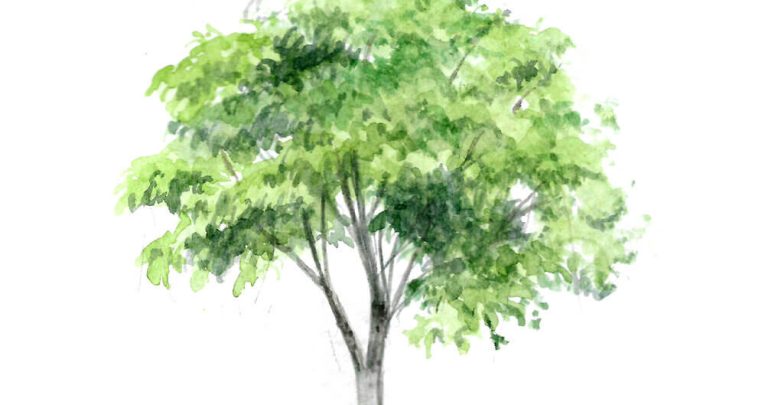Children’s nature books – stories to inspire resilience and hope

Tales of the great outdoors and all it has to offer can help pupils understand their own journeys of growth, says Polly Ho Yen…

- by Polly Ho-Yen

You know how it goes. You close your eyes on the first night of the summer break, ready for the holidays to roll after a long year of teaching, and staring right back at you are the faces of the kids you’ve just ushered out of your classroom.
There are some kids who always stick with you – days, months and even years after they were your students.
I particularly remember one such boy. He had brown eyes, incredibly curly eyelashes, and a deep and unshakeable love for nature.
In the reception class where I taught him, he spent most of his time by the flowerbeds. He took home seedlings that we grew in school. When he was in an older year, I vividly remember an afternoon he came back to visit reception and spent the whole time sketching the daffodils that had just bloomed.
For him, he was doing something that was both special and unremarkable. He was seeing the miracle of nature and he was nurturing it because it felt like the right thing to do. He just knew it in his bones.
But there’s one thing I haven’t yet told you about this boy – he didn’t have a garden; he hadn’t been raised by gardeners or growers. In fact, he lived in inner-city London where the closest park to him was a scruffy patch of balding grass that was hemmed in by busy roads on every side.
His parents looked quite bemused by the pot of mint he adopted and he tended with such fondness. But he sought out nature in his grey, concrete world and cared for it nonetheless.
The story of my latest book The Boy Who Grew a Tree is completely inspired by my nature-loving pupil and it’s got me thinking about how much I’m drawn to writing about nature and ultimately how important these stories are for young readers.
Books about connecting with nature
There’s much to draw out from stories about nature and why I think they are absolutely essential reading in our childhoods. Above all, these kinds of tales guide readers through the cycle of growth of which we are all in thrall.
Let’s look an enduring classic childhood book about nature: Eric Carle’s The Very Hungry Caterpillar. Why has it remained so popular? The child-friendly bright illustrations? The clever structure and elegant simplicity? Possibly.
But I wonder if the reason it remains so beloved is that within those few pages, we see a tale of utter transformation, of change, growth and development. And how does it end? The little caterpillar becomes a beautiful butterfly. It’s wonderful, remarkable, magical, and yet also quite ordinary.
Change and growth are what a child faces day after day – from the moment they are born, they are in a state of change and by the time they reach school-age, they are interacting with that change. Who are they and who might they turn into? How will they deal with unexpected curveballs? Will they be alright on their journey?
In stories about nature, we see firsthand how its wheels never stop turning. One day a caterpillar is munching on a leaf, on another it’s encased within a cocoon. There’s a steadiness to this growth. Change keeps happening, and that’s OK. Stories about nature are imbued with the reassuring message that growth is nothing to be afraid of and that, in fact, it can lead to beautiful butterflies.
———————————————————————————————————————- You may also like Poems KS2 – Explore nature through children’s poetry and creative writing ———————————————————————————————————————-
Building resilience in children
I also believe, as well as processing their own growth and change, stories showing the interaction of children with nature reflect and celebrate how resilient children are in facing their own challenges and the ups and downs of life.
I call upon another absolute classic of children’s literature, The Secret Garden by Frances Hodgson Burnett. Mary Lennox’s relationship with the secret garden she tends is transformative – not only for her character and personal fulfillment, but for those around her.
Her friendship with Colin, who believes he cannot walk, flourishes within the wall of the garden. It’s a sanctuary to them, a steadying force in the midst of the tumultuous circumstances they’ve encountered and there, like the garden, they bloom. There, Colin walks.
In The Boy Who Grew a Tree, my main character Timi discovers a tree that’s growing at an unexpected rate and at the same time, he is also making sense of change in other areas in his life.
His sister has just been born and it feels different to how he expected – in fact, it’s unsettling and strange. Though he’s feeling out of sorts, Timi continues to care for the tree, day after day.
He has to show commitment, resilience and persistence and he sees the rewards of his efforts in the growing, flourishing organism. In the same way, he continues to care for his sister and finally, at the end of the story, Timi meaningfully connects with her.
Story of hope
Through the last two years of the pandemic, it feels to me, especially during the first lockdown, that there has been more public appreciation for nature.
While our outdoor time was so restricted, we felt the joy of being in the open air, hearing bird song, and seeing greenery – wherever we were able to find it.
Many families turned to growing during the home-school weeks as something tangible to do. I remember vividly the first trip that I took out of our local area was to a wood, and being surrounded by the shady trees and the bluebells felt so nourishing that I felt as though my brain was lighting up, being actively enriched by the experience.
I find myself drawn to writing about nature in every story I write and, post-lockdown, I’m also trying to create for the reader that same experience that I had in that woods that day; a feeling of connectedness, of enrichment, of finding peace in a world and in a time that is troubling and unsettling.
Timi in my story discovers a tree seedling growing in a place where it should not be and he knows that unless he cares for it, it will not survive. He makes the choice to tend to it. He chooses positivity, kindness and care. He waters it, he makes sure it gets light, he treats it gently. And under this simple care, the tree flourishes beyond all expectation.
What I’ve learned is that a story about nature is ultimately a story about hope.
And in remembering this particular nature-loving student to you in the development of The Boy Who Grew a Tree, I also feel the significance in celebrating a character whose ‘power’ is simply caring for nature.
I wanted to make my past student a hero in the story because I suppose I see him as such. When the world feels like a bewildering place, a small act of care towards nature is a hugely empowering act that we all can choose.
Before becoming a children’s author, Polly Ho-Yen was a primary school teacher in Camberwell, London. The Boy Who Grew a Tree (£5.99, Knights of Media) is out now.









